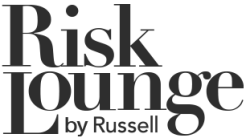
Since its creation in the 17th century Lloyd’s of London, and the rest of the specialty (re)insurance, has evolved through collaboration and mutually beneficial relationships between insureds, insurers, reinsureds, retrocessionaires, and brokers. The market has worked together on many levels; subscription placements, standardised wordings and clauses, layered programmes, premium and claim processing, electronic trading, and on many occasions to meet specific buyers’ requirements for specialist covers and/or emerging risk, but it has yet to fully and comprehensively embrace a joint approach to risk management. One of the main reasons for this was that policies were based on utmost good faith, and an element of trust in the relationships, however with changing requirements from regulators and investors this approach is no longer sufficient and the time is right for the market to embrace collaboration as the new way of working. Approaches
- Understanding from each link in the risk management chain regarding their role in the process.
- Standard templates for risk management data.
- Best practice documents explaining how the template should be populated.
- Clearly defined routes for how, and when, data is transmitted.
Data
The data that is being generated and transferred is clearly the key element around which the above process is built. It is important that this data is not only in the prescribed template but that the format is also validated to ensure consistency across the various participants in the data chain. Advances in technology can greatly assist in the validation and transmission of risk management data utilising everyday programming logic such as predictive spell checking to match-up naming inconsistencies, and iterative loops to check that field values, for example inception dates, are correctly entered. Once generated, risk management data can be shared using internet based technologies which are increasingly facilitating two-way secure and reliable communication across multiple users with different roles on a global basis. Benefits When collaboration works properly all parties benefit from the effort they invest in making it work. Reinsurers get sufficiently detailed and complete data sets to enable them to understand exactly the risks they are exposed to. From this they can consistently and accurately price the risks in their portfolio and manage their aggregates to ensure that they have sufficient capital to pay claims. For insurers there is certainty and openness in the market’s approach and greater efficiency in dealing with multiple brokers and reinsurers from having a single presentation to prepare. And finally for brokers there are efficiency gains from a common approach and the basis of a secure platform around which they can build a value added process.
Conclusion
Collaboration in risk management is key to the long-term sustainability of the (re)insurance market. With increasing demands for sophistication of analysis and transparency of exposure data the market must update its business practices and embrace new approaches to deliver this. The importance of good data will only increase in the coming years; the opportunity is now and for early adopters there is the possibility to shape the future of the market and show true leadership in the field of risk management.





